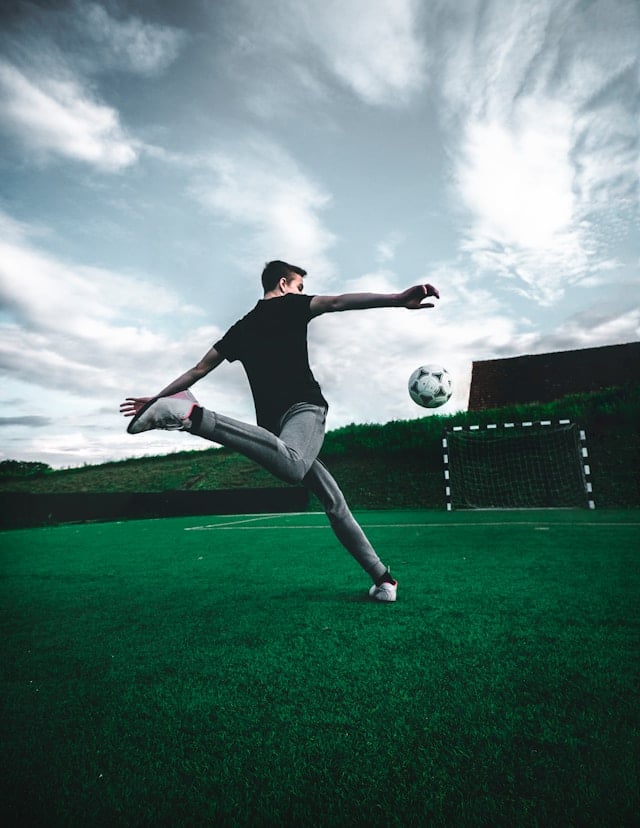What’s the Best Way to Develop First Touch Quality in Youth Soccer Players?

In the grand arena of soccer, one skill stands out as essential for players to master: the first touch. A player’s first touch on the ball can set the stage for the rest of their play, whether it leads to an immediate shot on goal or a swift transfer to a teammate. It’s a skill that separates the outstanding from the average, the pros from the amateurs. With the right initial touch, players can control the ball, dictate the game’s pace, and evade their opponents.
For youth players, developing a good first touch is crucial. As coaches and mentors, you have a pivotal role in cultivating this skill among your young players. In this article, we explore how to nurture this vital skill in youth soccer and provide the best practices for drills that can improve your players’ first touch.
Lire également : Canyoning in Bali: adventures for all levels
Igniting a Passion for Soccer in Kids
First and foremost, instilling a passion for soccer in your players is key. You want your kids to fall in love with the ball. Once they do, they will want to play, practice, and interact with it as much as possible. This enthusiasm is the first step toward skill development, as it motivates them to put in the time and effort needed.
At this stage, it’s less about structured drills and more about letting children play and experience the game. Encourage them to play soccer in various settings, such as the park, the garden, or even inside the house with a soft ball. This continuous interaction with the ball will naturally develop their touch and control.
Lire également : What’s the Most Effective Foot Strike Technique for Reducing Injury Risk in Distance Runners?
In your training sessions, create a positive and enjoyable atmosphere. Celebrate their efforts and successes, and provide constructive feedback when they make mistakes. A positive environment will make the children look forward to practice, and they will come to see soccer not just as a sport, but as a fun and exciting activity.
Fundamentals of First Touch
Once the children have developed a basic familiarity with the ball, it’s time to introduce the fundamentals of first touch. This is a critical phase where players learn to control the ball effectively with their first touch, setting them up for their next move. It’s important to break down the process into simple steps that the kids can easily understand and practice.
Start by teaching them how to receive the ball correctly. Show them how to position their body, how to cushion the ball using the inside of their foot, and how to direct it into space with their first touch. With time and continuous practice, they will start to develop a feel for the ball and understand how much force to apply to keep it under control.
Next, incorporate ball control exercises into your training sessions. These can be as simple as passing the ball back and forth or more complex exercises like juggling the ball with different parts of the foot. The objective here is to give the players as many touches on the ball as possible. The more they interact with the ball, the better their touch and control will become.
Effective Drills for Developing First Touch
Drills are an essential part of training for any sport, and soccer is no exception. The right drills can help youth players develop their skills in a structured and systematic way. For first touch development, the emphasis should be on drills that promote ball control and quick decision-making.
A simple yet effective drill is the "pass and move" exercise. This involves having the players pass the ball to each other while constantly moving around the field. The goal here is to develop their ability to control the ball quickly and accurately in a dynamic environment.
Another valuable drill is the "triangle touch" exercise. This involves three players standing in a triangle formation, passing the ball to each other. The recipient of the pass must control the ball with their first touch and immediately pass it to the next player. This drill not only improves first touch but also promotes quick thinking and accurate passing.
For a more advanced drill, consider the "pressure touch" exercise. Here, one player attempts to control a pass while another player applies pressure, trying to dispossess them. This teaches players to maintain control of the ball even in challenging situations, a skill that is crucial in actual game scenarios.
Nurturing a Team-Oriented Mindset
While individual skills are important, soccer is a team game. The best players are not just those with excellent skills, but those who can use their skills effectively within a team setting. Therefore, it’s crucial to nurture a team-oriented mindset among your players.
In your training sessions, emphasize the importance of teamwork. Teach them that every pass, every touch, every move they make on the field impacts the whole team. Show them how a good first touch can create opportunities for their teammates, and how poor control can put the team at a disadvantage.
Incorporate team-based drills into your training. These can include small-sided games, where players have to work together to score goals, or possession exercises, where the team that maintains possession of the ball for the longest time wins. These drills not only help develop first touch and other skills, but also foster teamwork and cooperation among the players.
Developing good first touch in youth soccer players is a process that requires time, patience, and consistent practice. But with passion for the game, understanding of the fundamentals, effective drills, and a team-oriented mindset, your players can master this crucial skill and become more effective on the soccer field. Remember, as a coach, your role is pivotal in guiding and supporting your players in their skill development journey.
Advanced Techniques and Skill Progression
As youth soccer players become more adept at first touch and ball control, introducing advanced techniques and encouraging skill progression is critical. In this section, we will delve into strategic ways of enhancing the first touch skills of young soccer enthusiasts.
As a soccer coach, consider incorporating advanced drills into your practice sessions. One such drill is the "one-touch passing" exercise. With this drill, players must pass the soccer ball using only their first touch, fostering quick decision making and precision. This drill mimics real-game scenarios where there is a need for immediate action upon receiving the ball.
For more seasoned youth players, try the "juggling challenge." This drill requires players to keep the ball in the air using different parts of their body while moving around the field. Juggling enhances ball control and boosts players’ confidence in handling the ball.
Remember to always tailor your drills to your players’ age group and skill level. For younger players, keep the drills simple and gradually introduce complexity as they grow and improve.
Also, consider incorporating "anytime soccer" into your training regime. Encourage your players to practice their ball mastery skills outside formal training sessions. They could do this in their backyard or local park, using anything from a standard soccer ball to a smaller size ball for added difficulty. This constant interaction with the ball will help develop their first touch and overall soccer skills.
Conclusion: Cultivating Excellence in Youth Soccer
Developing a high-quality first touch in youth soccer players is not an overnight task. It takes time, practice, and a lot of patience to perfect this crucial soccer skill. However, with the right guidance, drills, and a consistent training regime, young players can make significant strides in their ball control capabilities.
As a soccer coach, your role is to guide these young players on their journey to becoming the best soccer players they can be. Remember to keep your training sessions enjoyable and positive to foster a love for the sport. Celebrate their milestones, no matter how small, to motivate them to keep pushing their limits.
With the right approach, youth soccer players can develop a strong first touch that sets them apart from their peers. This will not only enhance their performance on the field but also build their confidence and love for the beautiful game of soccer.
In conclusion, the best way to develop first touch quality in youth soccer players is through a combination of passion for the game, understanding of the fundamentals, effective and age-appropriate soccer drills, and a team-oriented mindset.
